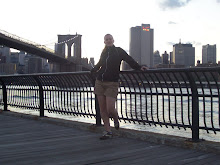Wednesday, March 3, 2010
Architecture of Museums
Architecture of a museum does not really influence my experience that much because I was more focused on the exhibit at hand. Yet in hindsight I have had experiences where the architecture was both positive and negative e effect on the museums I visit. But comparing the Little Big Horn Museum to the Museum of Natural History museum in New York would be unfair in my opinion, for both have very functional architecture compatible for the purpose of the museum. The Little Big Horn verse the Natural History in New York museums is vastly different in architecture. While the Little Big Horn museum is right by the Battle field and valley thus the architecture is more harmonious with the surroundings. Big windows overlooking the valley gives the museum the natural lighting and feeling of the continuation of the museum through the windows and out to the valley. The architecture purpose was to immerse the visitors with the surrounding area. While the Natural History museum is a large building with large rooms that are lit by artificial lighting. It gives the exhibits a roomy feeling while looking at the artifacts. Also the natural lights of windows might harm the artifacts on display. But sometimes because of the enormity of the rooms it detracts from the exhibit. The bigger the museum the more lost people can get in them takes away from the overall experience if the display because the only thing the visitors would take away from the museum is the lost experience. The architecture of a museum is a double edge sword of having a good influence or a bad experience at a museum. This fine line can be reach but hard to stay on when the exhibits are always changing in the museums.
Subscribe to:
Post Comments (Atom)

No comments:
Post a Comment